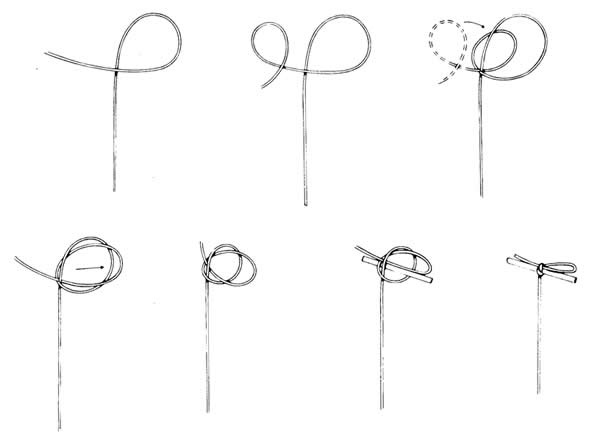Replacing a Harp String
Tie a knot to anchor it and then attach it to the tuning pin
First, after removing the broken string, insert a replacement nylon or gut string from the topside of the soundboard and pull it through a soundhole on the backside of the harp far enough to have room to tie an anchor knot as shown in the graphic to the right. The insertion of the string ends (pieces of 5th octave gut) in the last two steps is not necessary for the 4th and 5th octave strings.
Note: when tying a knot of a gut string, you may hear a “crackle”, this is from the coating on the string and is completely normal.


